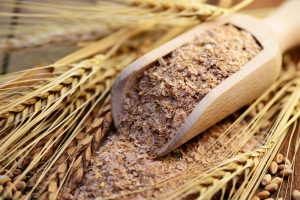Fernando Diaz
Starch is one of the most abundant nutrients in calf starter feed. Cereal grains (corn, barley, wheat, and oats) are the main sources of starch in starters, followed by their co-products such as wheat bran or corn gluten feed. Starch fermented in the rumen produces short-chain fatty acids, which stimulate the development of the rumen and ruminal papillae. It has been shown that high starch content in starter improves the growth of the pre-weaned calf, it is not well defined however, what is the optimal concentration to formulate diets for adequate growth and health.
Researchers from Ohio (Hill et al., 2008), demonstrated that by reducing starch concentration from 44.1 to 38.2 to 30.9% dry matter (DM) by replacing cereal grains (corn and oats) with cottonseed shells in a texturized ration, the average daily gain (GMD) of Holstein calves during the first 2 months of life decreased linearly (647, 603 and 568 g/day, respectively).
High starch intakes can reduce ruminal pH
Another study published recently (Hu et al., 2018) evaluated 5 experiments and 18 different diets fed to 372 pre-weaned Holstein calves of 0 to 8 weeks of age. Although the energy concentration of the starter was similar (average: 2.94 Mcal of metabolizable energy per kg of DM; range 2.85 – 3.03 Mcal), the starch content ranged from 10.1 to 53.3% DM while the fiber from 12.1 to 45.3% DM. The authors found that increasing starch concentration in feed increased linearly DM intake and growth (weight and height). By raising starch concentration from 23 to 43%, average daily gain and wither height increased by 5.8 and 5.0%, respectively.
High starch intakes however can reduce ruminal pH and increase the risk of sub-clinical acidosis characterized by ruminal pH drops below 5.6. Ruminal acidosis is a process derived from excessive accumulation of volatile fatty acids in the rumen or insufficient supply of substances that neutralize their acidity (buffers) through saliva or feed intake.
The negative effects of ruminal acidosis on the health and productive performance of dairy cows have been extensively researched, however, these effects are not well understood in young calves. To evaluate them, Wisconsin researchers (Gelsinger et al., 2020) fed two types of starter to calves of 1 to 16 weeks of age: one had the goal of inducing acidosis (granulated, 42.7% starch, 15.1% fiber) and the other to avoid it (texturized, 35.3% starch, 25.3% fiber).
Unsurprisingly, calves that received the feed with the highest starch content showed lower ruminal pH. In addition, the authors indicated that starting week 4 and for the duration of the experiment, these calves consumed less starter (0.5 – 1.5 kg (daily) than those who received the feed with less starch. As a result, the weight of the calves with acidosis was lower at weaning (8 weeks; 75 vs. 90 kg) and at the end of the study (16 weeks; 125 vs. 160 kg).
These results highlight the importance of starch concentration in starter feed. It is advisable to include between 34 – 40% of the DM to optimize growth and decrease the incidence of metabolic problems.
In addition to the starch concentration in the feed, it is necessary to take into account other nutritional factors that may affect calf performance such as the type of cereal grain (different ruminal starch degradability), fiber concentration, presentation of the ration (meal, granules, texturized), fiber availability and amount of milk supplied.
© 2020 Dairy Knowledge Center. All Rights Reserved.









